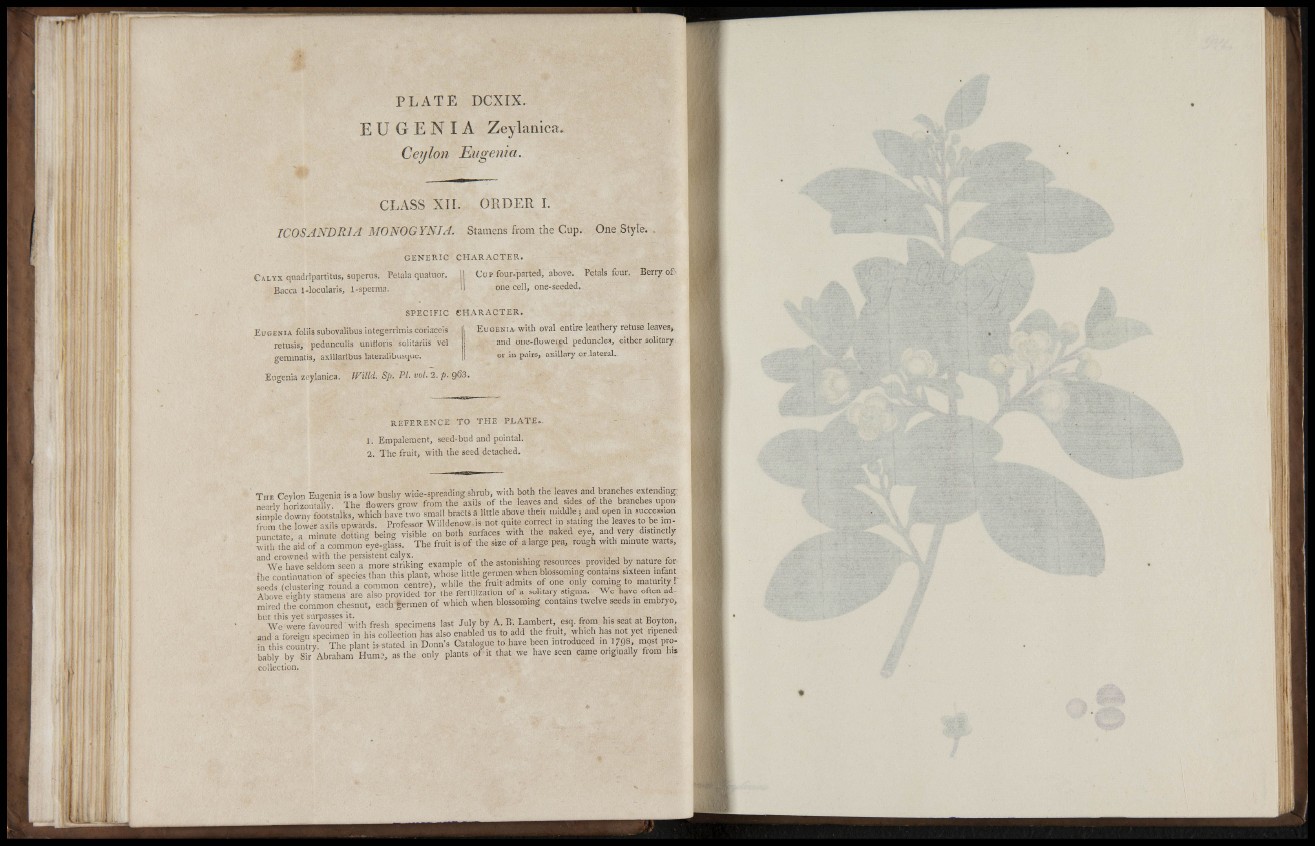
. 1
i-iv:;'
P L A T E DCXIX.
E U G E N I A Zeylanica.
Ceylon Eugenia.
CLASS XIT. ORDER L
TCOSAXDRIA MONOGYNJA. Stamens from the Cup. One Style.
GENERIC CHARACTER.
C A L Y X qnadripartitus, superiis. Pelala quatuor.
Bacca l-locularisj 1-sperma.
CUP four-parted, above. Petals four. Berry of•
one cell, one-seeded.
SPECIFIC CHARACTER.
E U G E N I A foliis subovalibus integerrimis coriaceis
retusis, pedunculis unifloris solitariis vel
geminatis, axillaribus lateralibusque.
Eugenia zeylanica. IVilld. Sp. Pi. vol. 2. p. 903.
EUGENIA-with oval entire leathery retuse leaves^
and one-flowered peduncles, either solitary
or in pairs, axillary or lateral.
'Ml
i;|l I
î î ;
i i J
I i
REFERENCE TO THE PLATE.
1. Empalement, seed-bud and pointal.
2. The fruit, with the seed detached.
THE Ceylon Eugenia is-alow bushy wide-spreading shrub, w,th both the leaves and branches extendmg,
nearly horizontally. The flowers grow from the axils of the leaves and sides of the branches upon
S e downv footstalks, which havt two small bracts a little above then- middle ; and open m succession
•om the lower axils upwards. Professor Willdenow is not quite correct m statmg the leaves to be .m-
R e t a t e , a minute dotting being visible on both surfaces with the naked eye and very distinct y
^nih the aid of a common eye-gl?ss. The fruit is of the size of a large pea, rough with minute warts,
and crowned with the persistent calyx. •, , u ^ t-
W e have seldom seen a more striking example of the astonishing resources provided by nature for
fhe continuation of species than this plant, whose little gennen when blossoming contams sixteen infan
eed,7cUistering round a common centre), while the fruit admits of one only coming to ma urity !
A b L eighty stamens are also provided for the fertiiization of a solitary stigma. We have often admired
thi common chesnut, each gerraen of which when blossoming contains twelve seeds in embryo.
W e w^re ftS with fresh specimens last July by A, B. Lambert, esq. from his seat at Boyton
and a foreign specimen in his collection has also enabled us to add the fmit, which has not yet ripened
fi this country The plant i . stated in Donns Catalogue to have been introduced m 1798 n^gst p obably
by Sir Abraham Hum:?, as the only plants of it that we have seen came originally from his
collection.
i t •
isî'
liti
¿4'
I ,
u
te